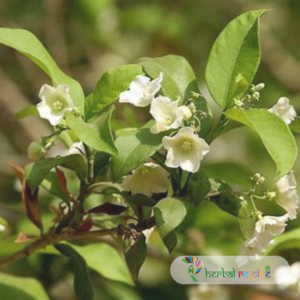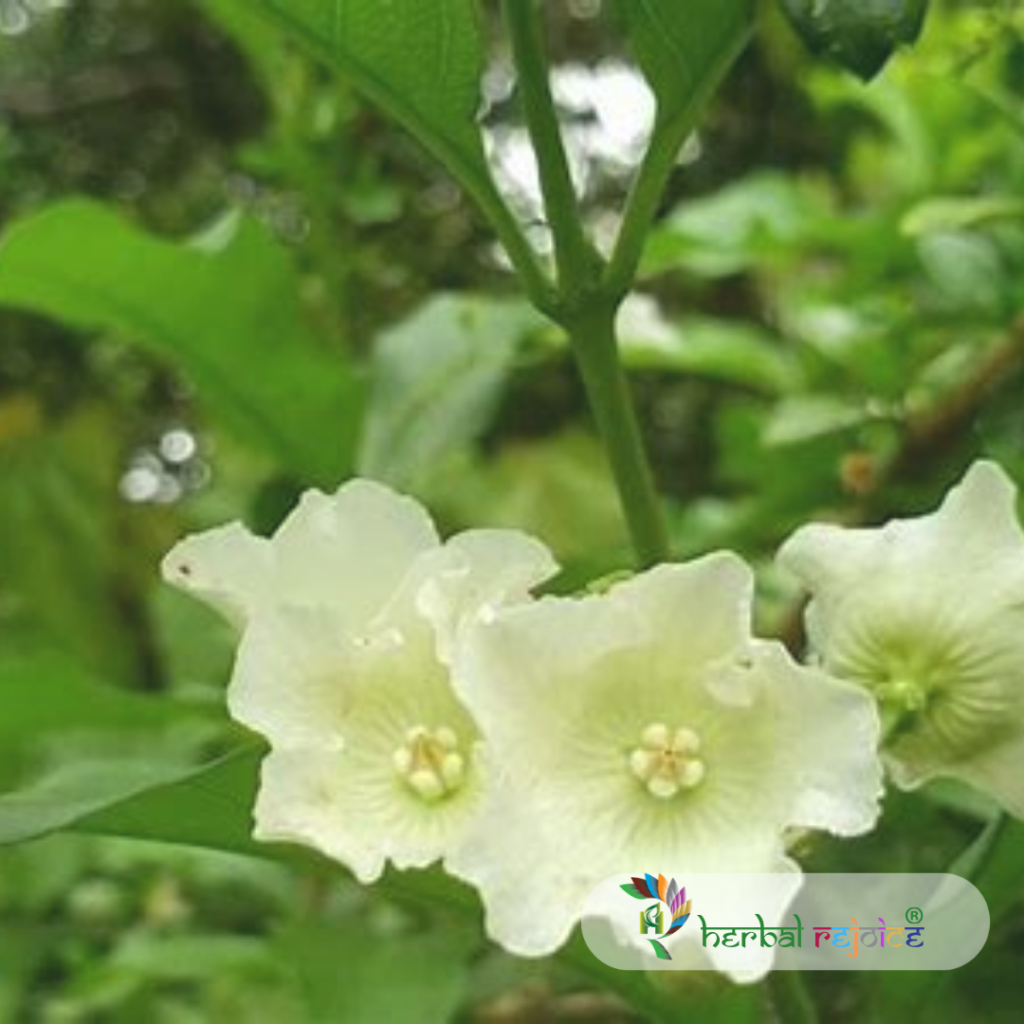Introduction
Vallaris solanacea Kuntze, also known as Aasphotaa or Asphuka in Ayurvedic medicine, is a plant that belongs to the Apocynaceae family. It can be found throughout India and is often cultivated in gardens.
Medicinal Uses
In traditional folklore, the plant is referred to as Haapharamaali var. Dudhi-bel in the Garhwal region. The latex of Vallaris solanacea is used topically on old wounds and sores due to its mild irritant properties. The bark, on the other hand, is known for its astringent qualities. Additionally, the seeds of Vallaris solanacea are considered a cardiac tonic.

Chemical Constituents
Scientific studies have shown that the seeds of Vallaris solanacea are rich in cardiac glycosides. They contain several compounds such as acoschimperoside P, mono-O-acetylvallaroside, mono-O-acetylsolanoside, mono-O-acetylacoschimperoside P, vallaroside, vallarosolanoside, solanoside, and 16-deacetyl-16-anhydroacoschimperoside P. Notably, O-acetylsolanoside is a potent cardiotonic compound.
Furthermore, the seed oil of Vallaris solanacea contains palmitic, oleic, and linoleic acids. The leaves of the plant have been found to contain beta-sitosterol, beta-amyrin, and ursolic acid. It is also worth mentioning that Vallaris glabra Kuntze, found in West Bengal, is often equated with Aasphotaa.
Conclusion
Overall, Vallaris solanacea Kuntze is a plant with various medicinal properties. Its traditional use in wound healing and cardiac health is supported by scientific findings. With further research, this plant could potentially contribute to the development of new therapeutic approaches in the future.
Frequently Asked Questions
What is Vallaris solanacea scientifically known as?
Vallaris solanacea Kuntze is also known as Aasphotaa or Asphuka in Ayurvedic medicine.
Which family does Vallaris solanacea belong to?
It belongs to the Apocynaceae family.
Where can Vallaris solanacea be found?
This plant can be found throughout India and is often cultivated in gardens.
What are the traditional names for Vallaris solanacea in different regions?
In traditional folklore, it is referred to as Haapharamaali var. Dudhi-bel in the Garhwal region.
How is the latex of Vallaris solanacea used?
The latex is used topically on old wounds and sores due to its mild irritant properties.
What are the medicinal properties of the bark of Vallaris solanacea?
The bark is known for its astringent qualities.
What are the uses of Vallaris solanacea seeds?
The seeds are considered a cardiac tonic and are rich in cardiac glycosides.
What compounds are found in the seeds of Vallaris solanacea?
The seeds contain several compounds, including acoschimperoside P, mono-O-acetylvallaroside, mono-O-acetylsolanoside, mono-O-acetylacoschimperoside P, vallaroside, vallarosolanoside, solanoside, and 16-deacetyl-16-anhydroacoschimperoside P. O-acetylsolanoside is notably a potent cardiotonic compound.
What fatty acids are present in the seed oil of Vallaris solanacea?
The seed oil contains palmitic, oleic, and linoleic acids.
What are the key compounds found in the leaves of Vallaris solanacea?
The leaves have been found to contain beta-sitosterol, beta-amyrin, and ursolic acid.
Is Vallaris glabra equated with Vallaris solanacea?
Yes, Vallaris glabra Kuntze, found in West Bengal, is often equated with Aasphotaa.
What is the overall significance of Vallaris solanacea in medicine?
Vallaris solanacea Kuntze is recognized for its various medicinal properties, particularly in wound healing and cardiac health. Its traditional uses are supported by scientific findings, suggesting potential contributions to the development of new therapeutic approaches in the future.


